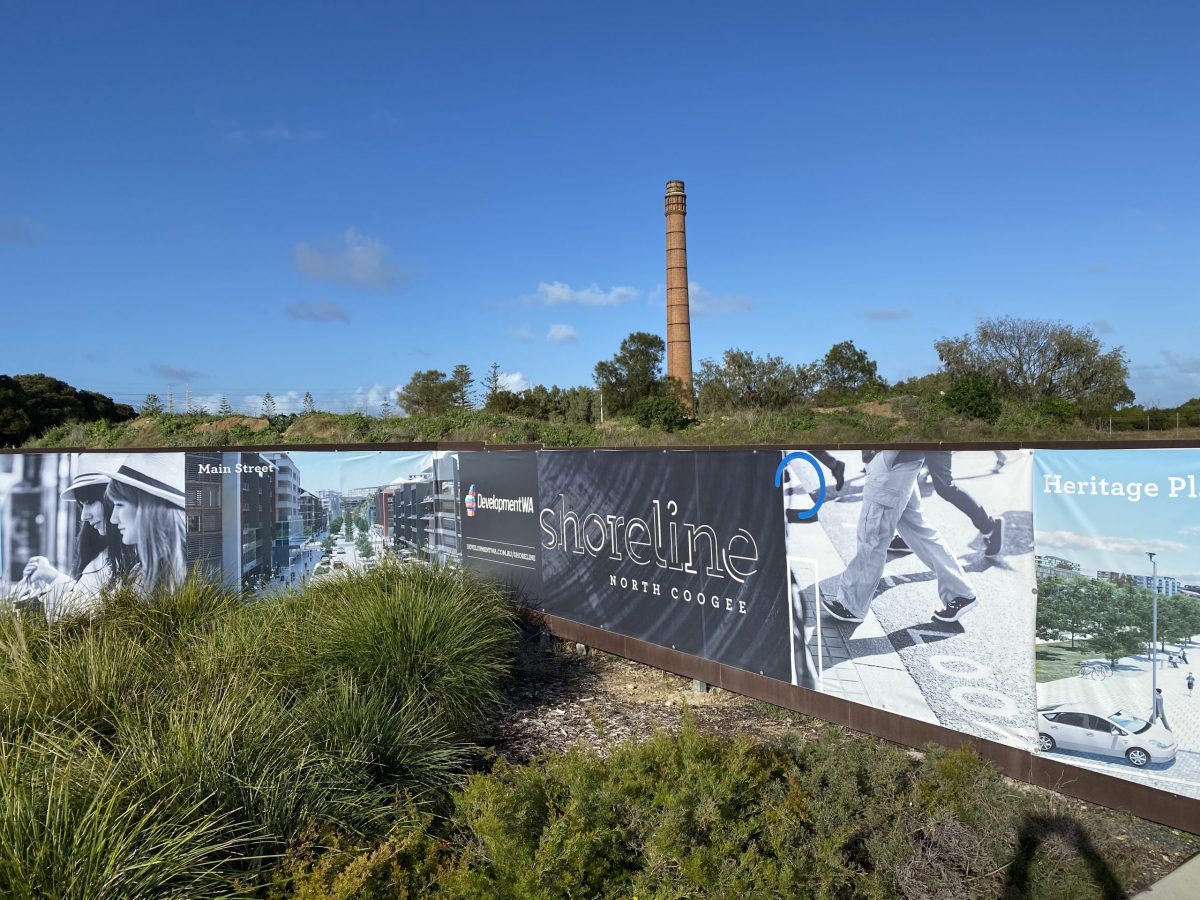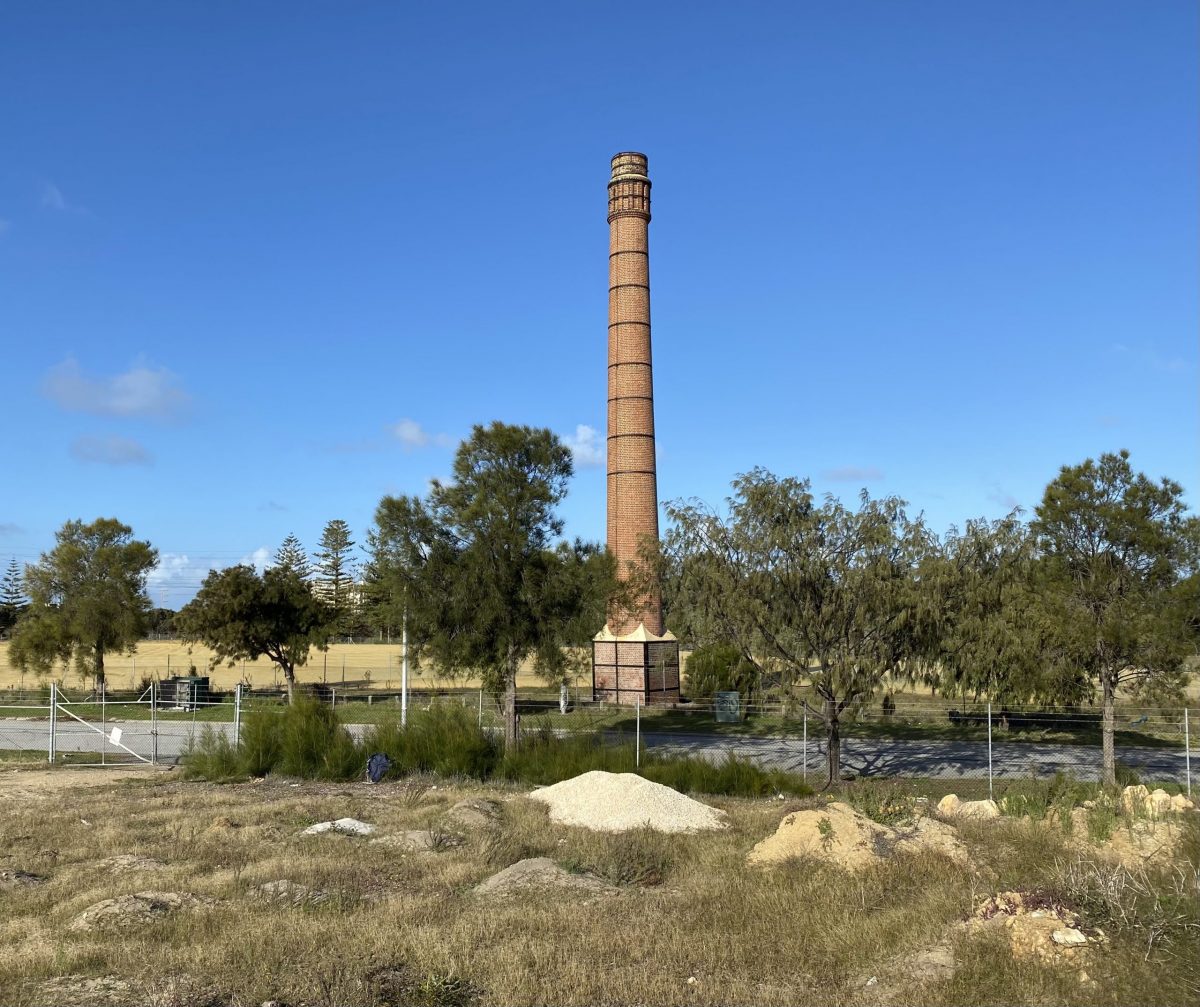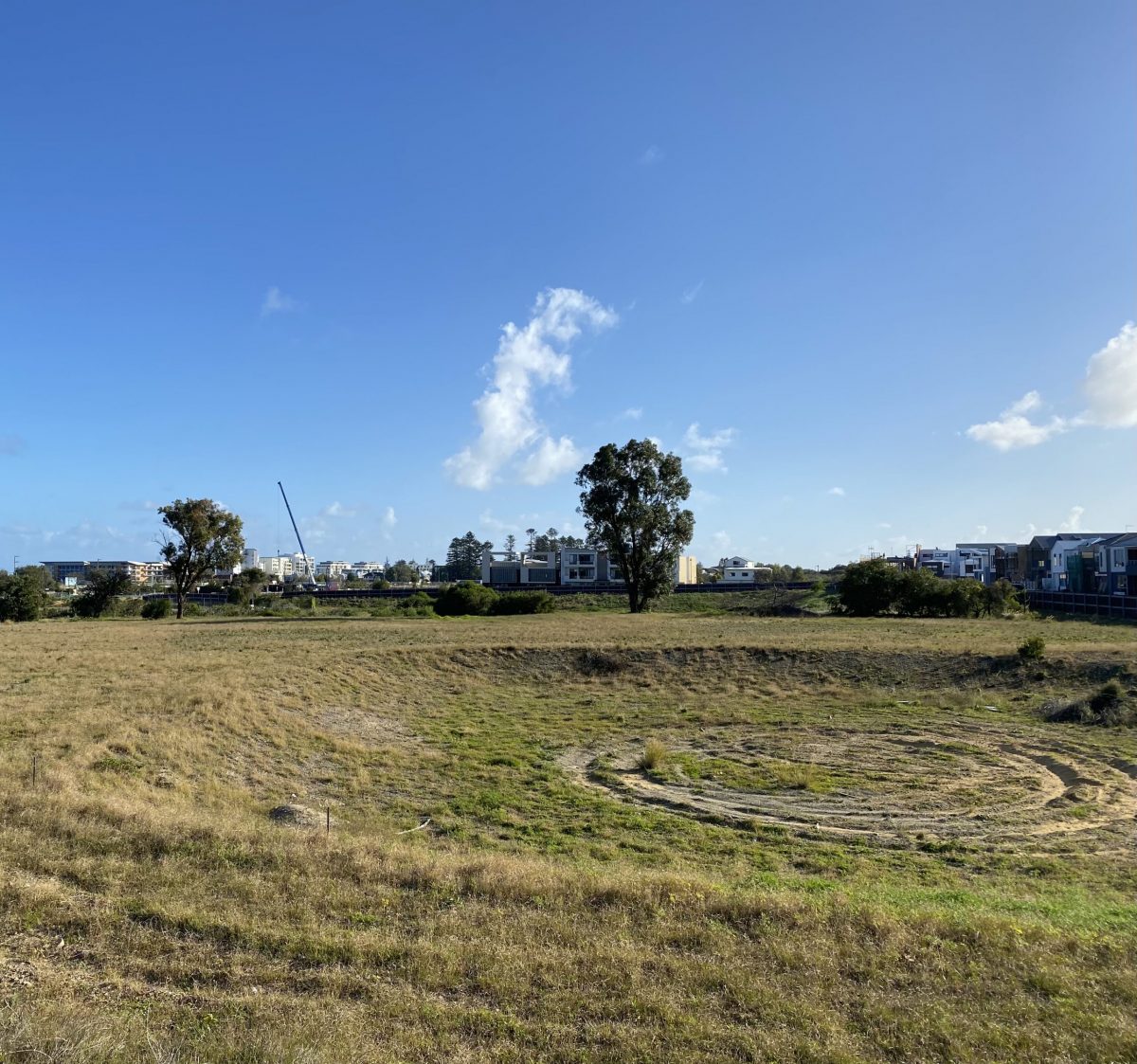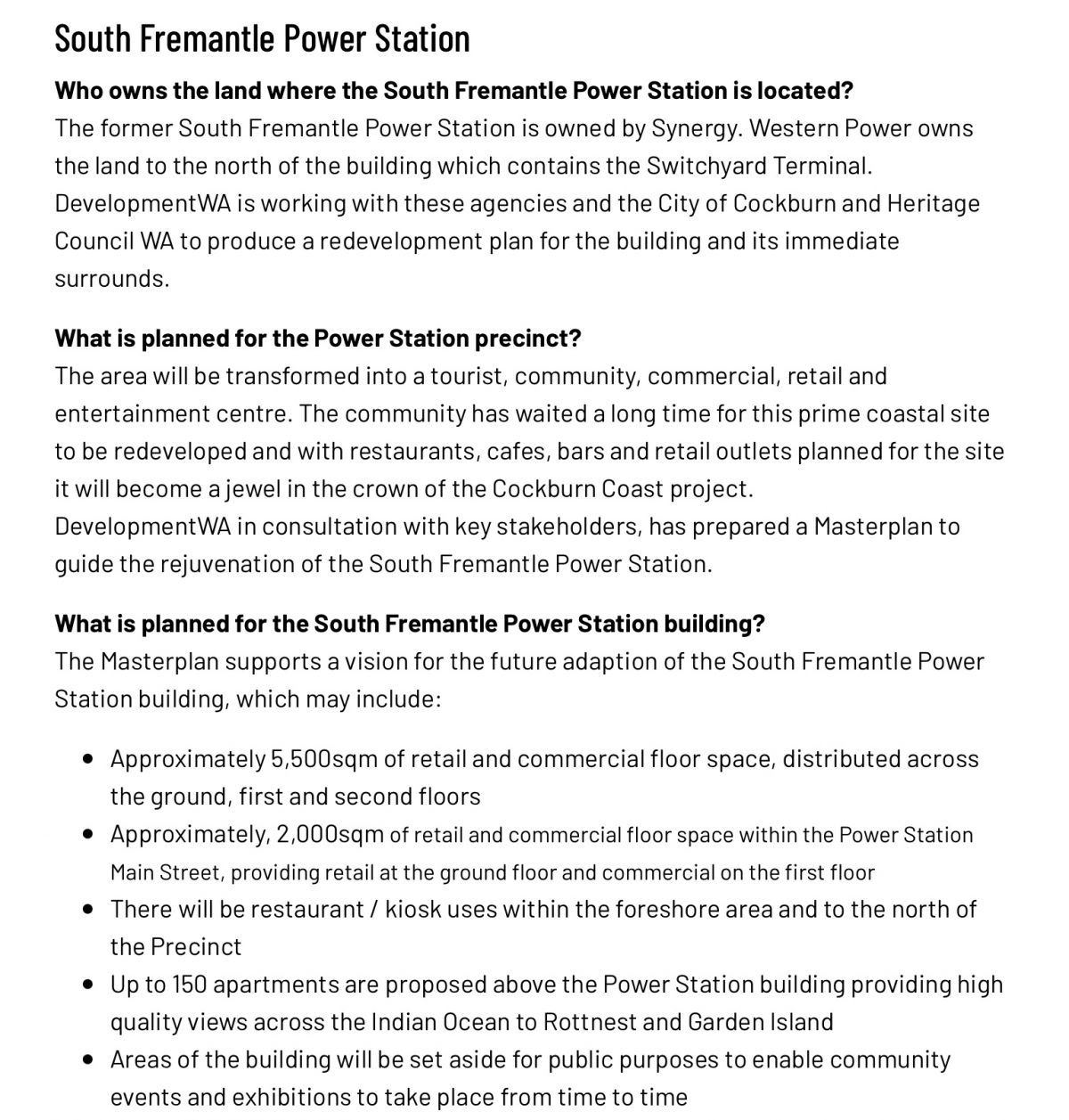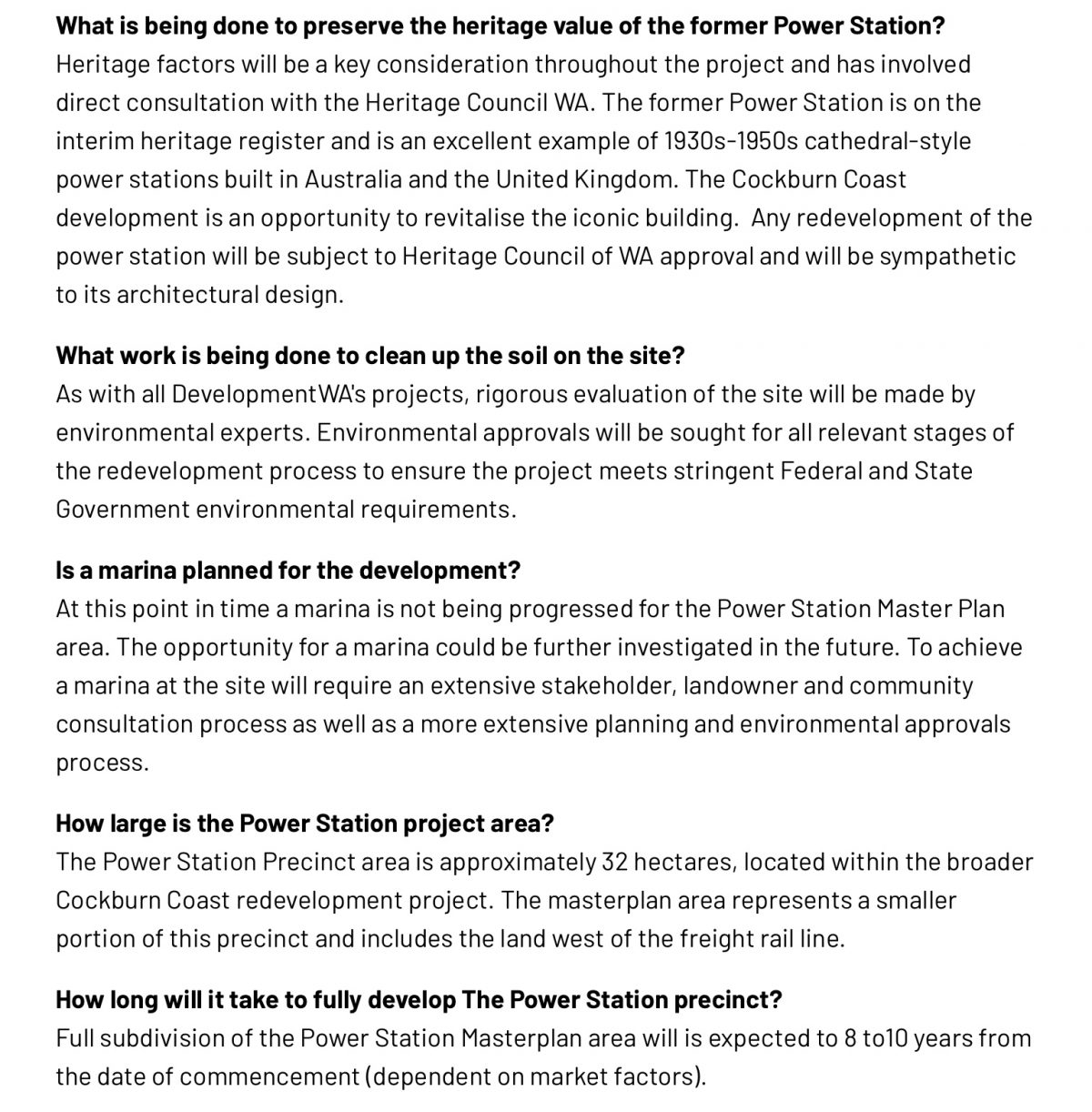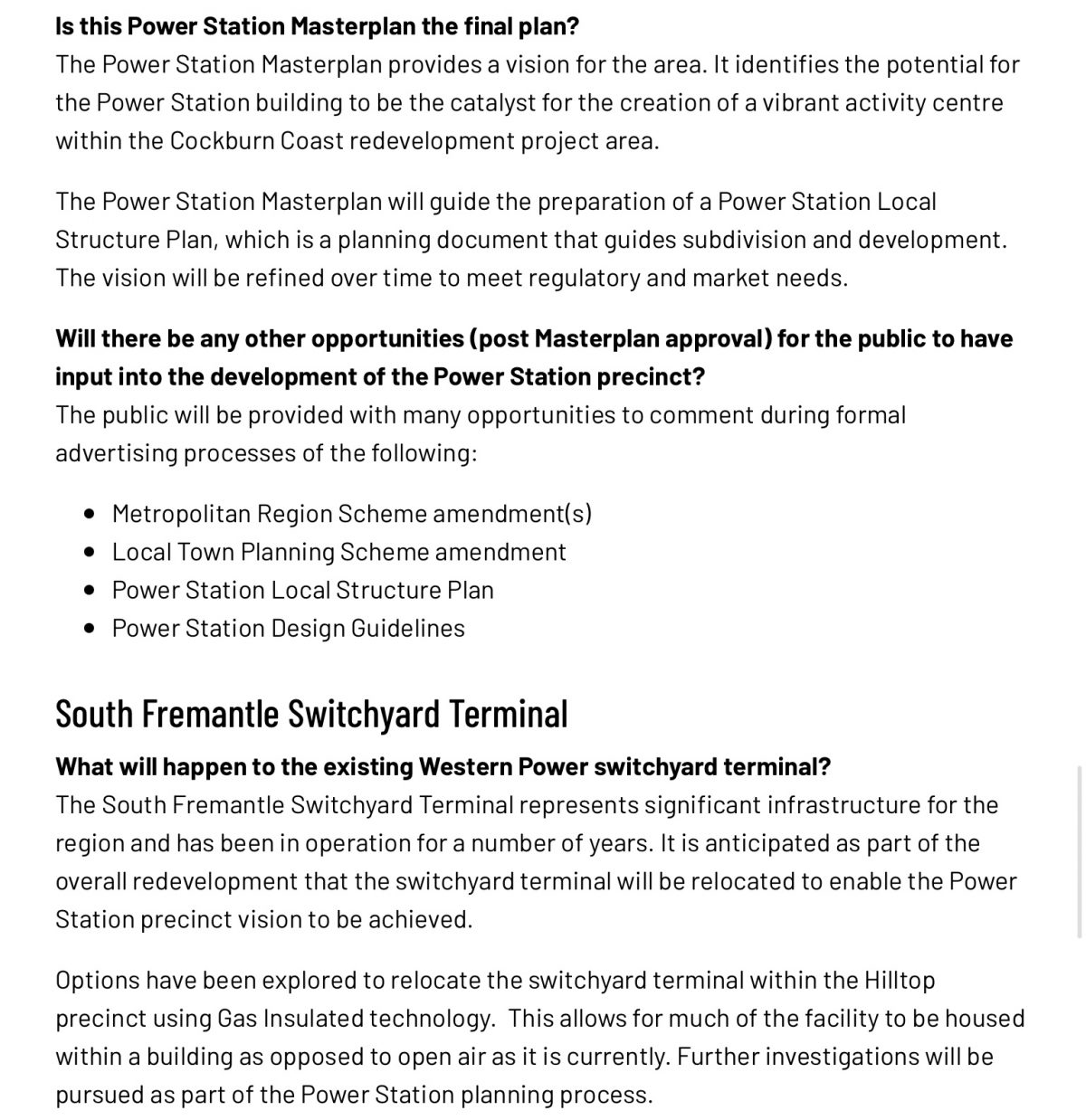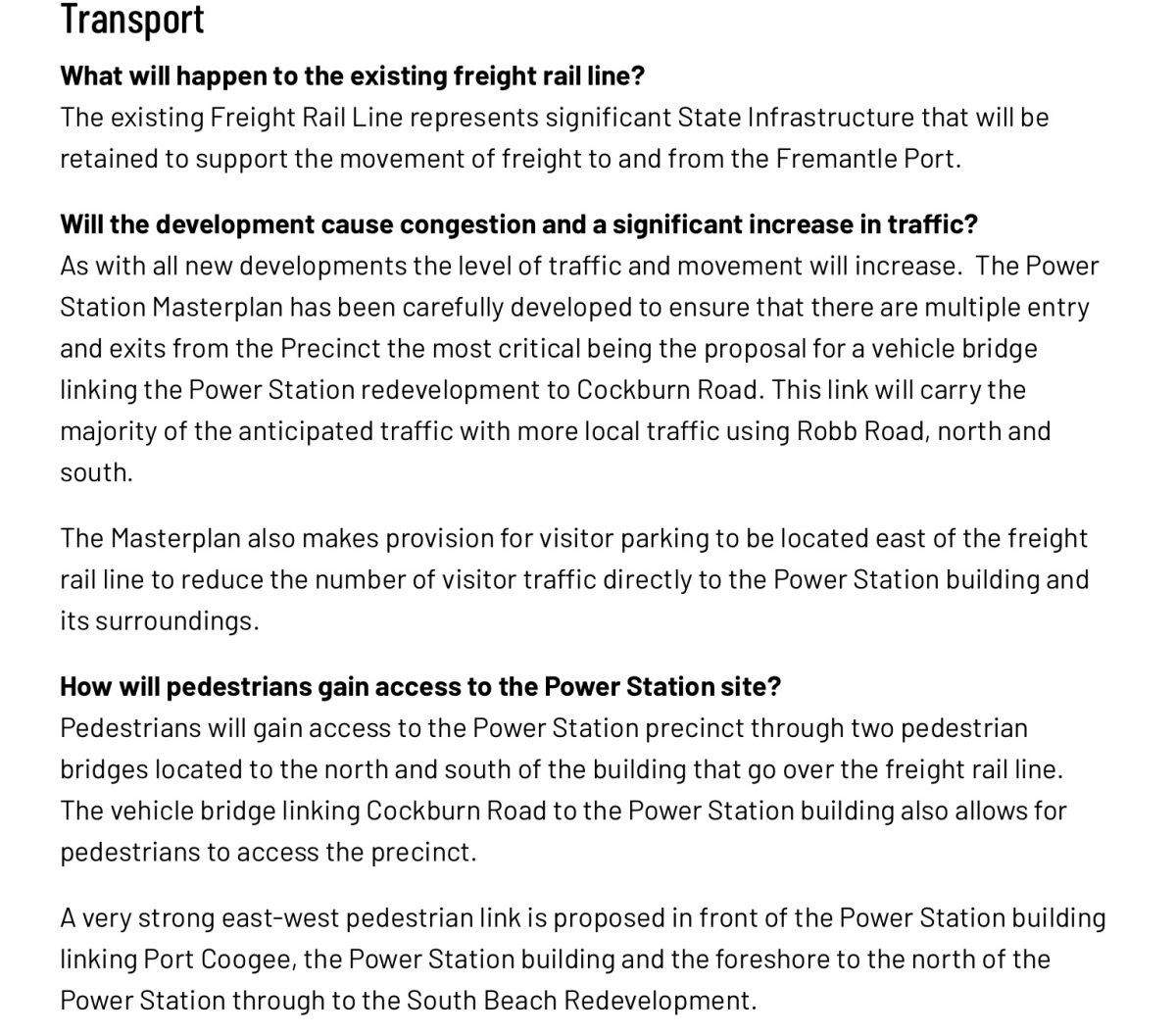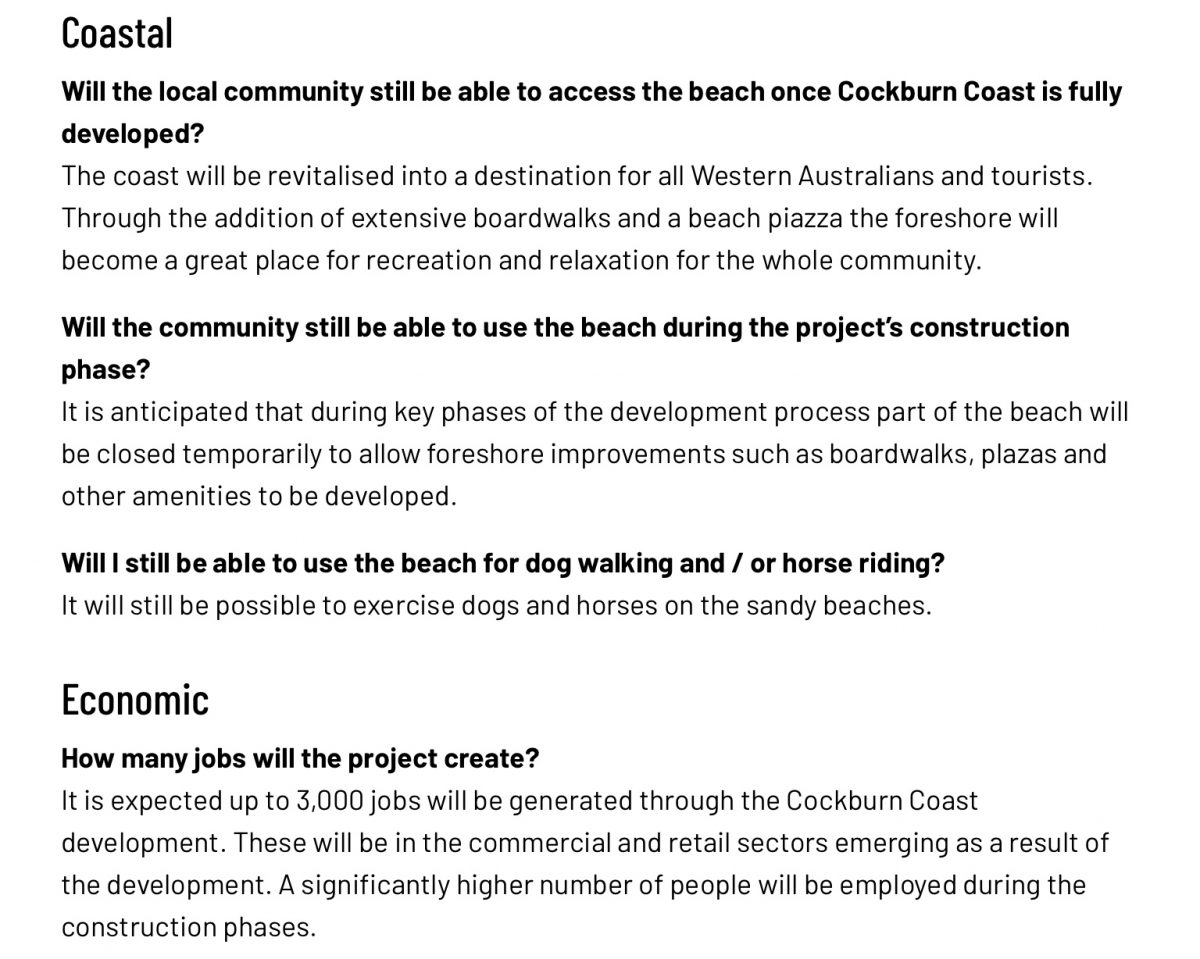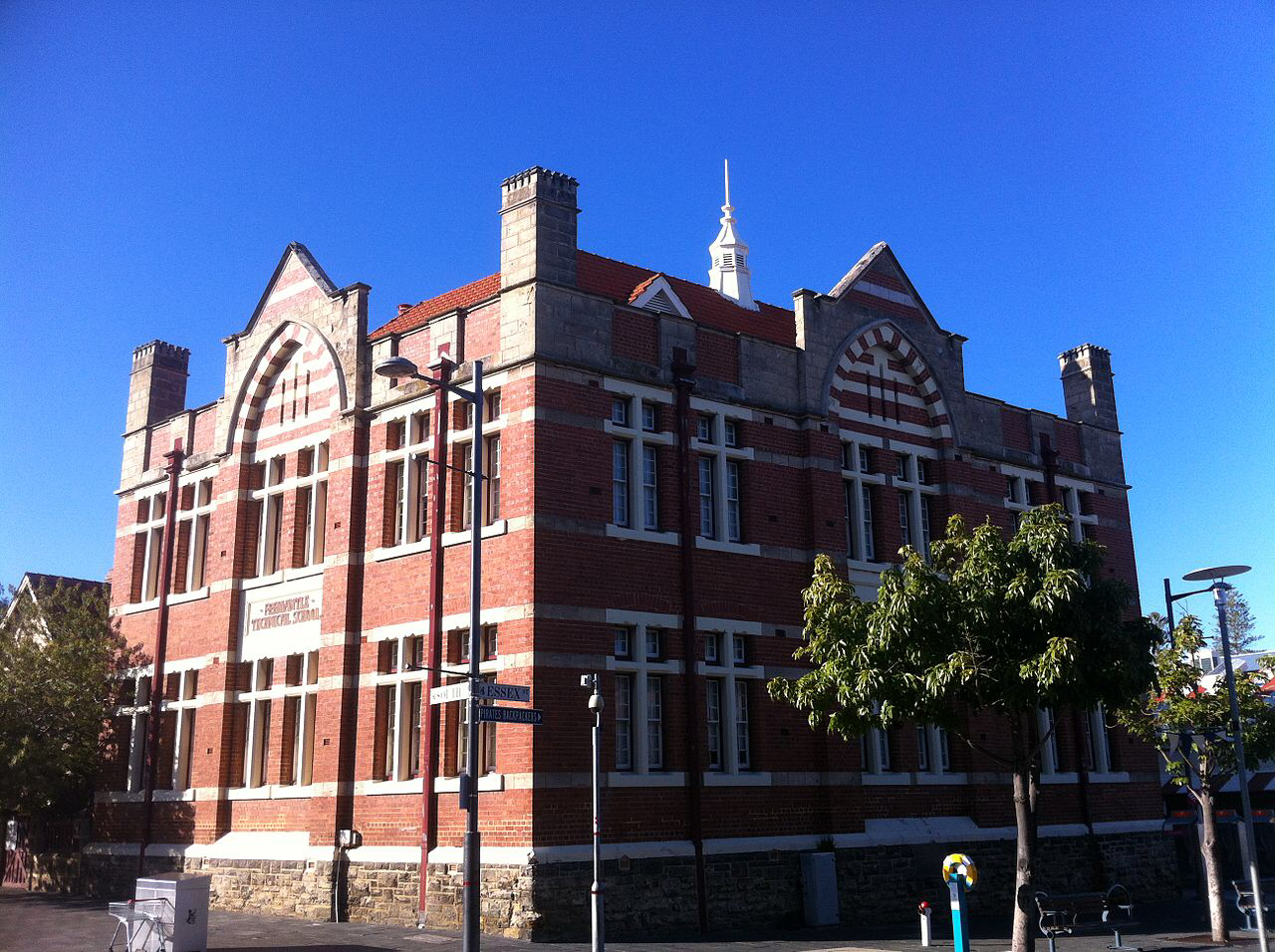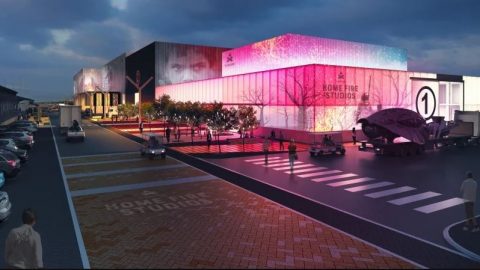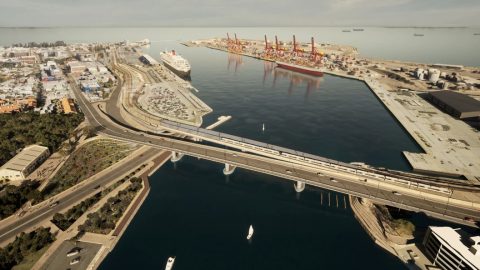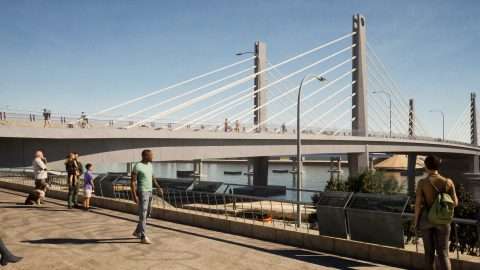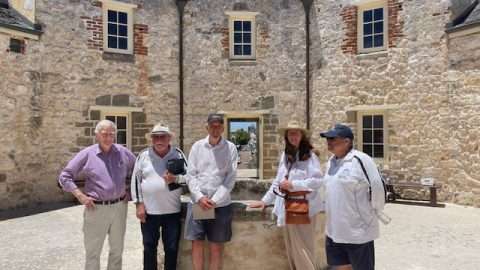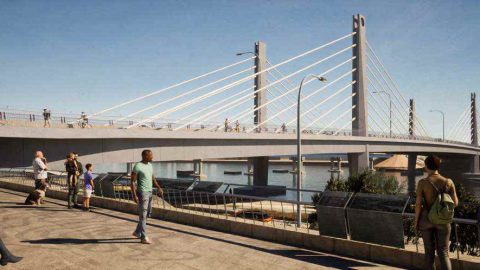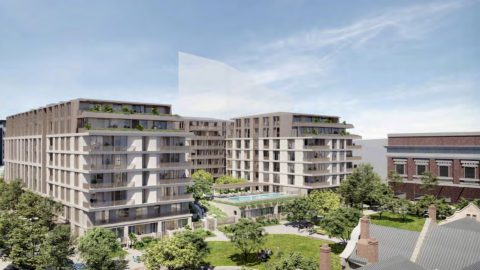Are you familiar with the locality name Cockburn Coast?
If not, you should get used to it, as that’s the strip of coastal land between South Beach/North Coogee and Port Coogee that falls within the boundaries of the City of Cockburn.
It includes the derelict South Fremantle Power Station that has recently been listed on the State Heritage Register and is the subject of sale by the State Government through an EOI – expression of interest – process that is designed to permit the eventual redevelopment of the Power Station at private enterprise expense.
In this article we look at the –
* past planning history of the Power Station site
* public expectations as to its future development
* who is oversighting the sale process, and
* why the EOI process seems to be happening with a degree of haste.
On the last issue, we wonder whether there is a possibility that the flexible and temporary Covid planning system – introduced 12 months ago and due to expire on 6 January 2022, with the aim of streamlining big development proposals – helps explains the apparent haste.
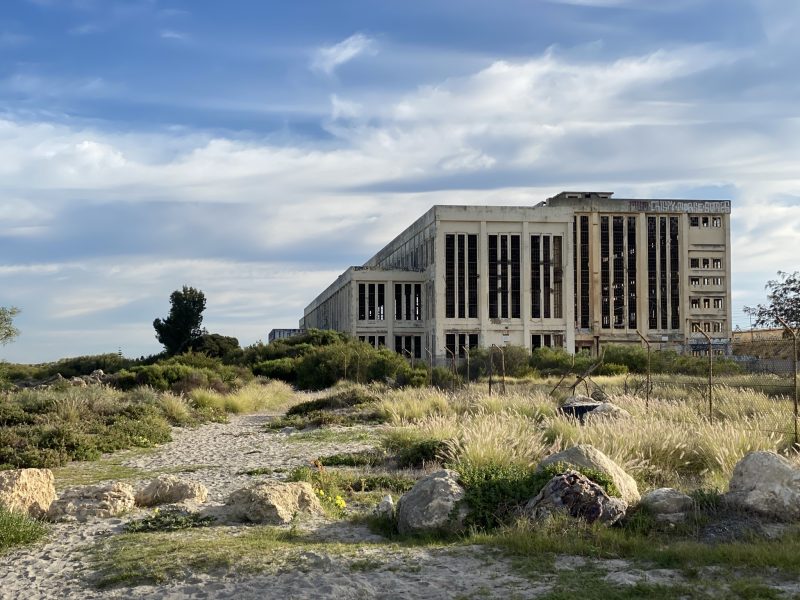
THE PAST
Cockburn Coast is the name that was assigned to the area some years back by the State Government’s land development arm now know as DevelopmentWA, formerly LandCorp.
The redevelopment, including the proper heritage preservation, of the old Power Station is pretty much the last piece in the Cockburn Coast redevelopment puzzle. But just what is its future? Do ideas from the past provide some clues?
If you look at Development WA’s website you’ll discover, if you don’t already know as a frequent Cockburn Road user, that Shoreline – the Cockburn Coast precinct formerly known as Robb Jetty – is rapidly undergoing small lot, townhouse style redevelopment. Looks great.
(Why it couldn’t still be called Robb Jetty beats us. Perhaps there are some older folk at DevelopmentWA who have memories of the old abattoir odours and were worried the old name would put some buyers off! At least the heritage listed old chimney stack from those old days is still there as a reminder of the past!)
The relatively recent planning history of the Power Station is instructive. The replanning and development of the Cockburn Coast strip has been underway for years, although the Power Station site has bedevilled much of it at nearly every stage.
With Shoreline now moving fast on its north side and the Port Coogee residential development powering ahead on its south side, the Power Station site has been caught in something of a pincer movement. But the need for its sensitive and thoughtful redevelopment as a major tourist and community hub is greater than ever. What a site it is!
As we said in our timely and much read recent story on the fate of the Power Station, A Crime of Two Centuries, it’s time to resolve the Power Station’s future.
The challenge presented by the Power Station to the redevelopment of the entire Cockburn Coast area has stymied successive State Governments. But none have been entirely inactive when it comes to at least getting government departments to think about the challenge.
Ideas go back quite a way, but focussing on the last 10-15 years there are important propositions pertaining to the redevelopment of the Power Station to be discovered in what past Ministers and planning authorities have said.
For example, in 2009 – just 12 years ago – during the Barnett Coalition Government period, the Department of Planning, Lands and Heritage published a very detailed district structure plan for the area.
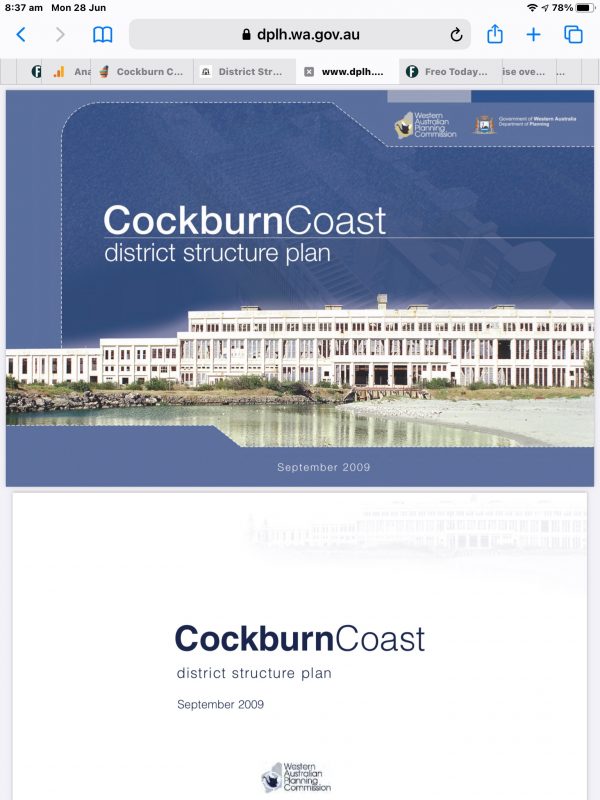
Then Minister for Planning John Day in his introduction to the plan explained its concepts, many of which have been carried over into later planning for the area and have helped to inform DevelopmentWA’s land development approach to the area today.
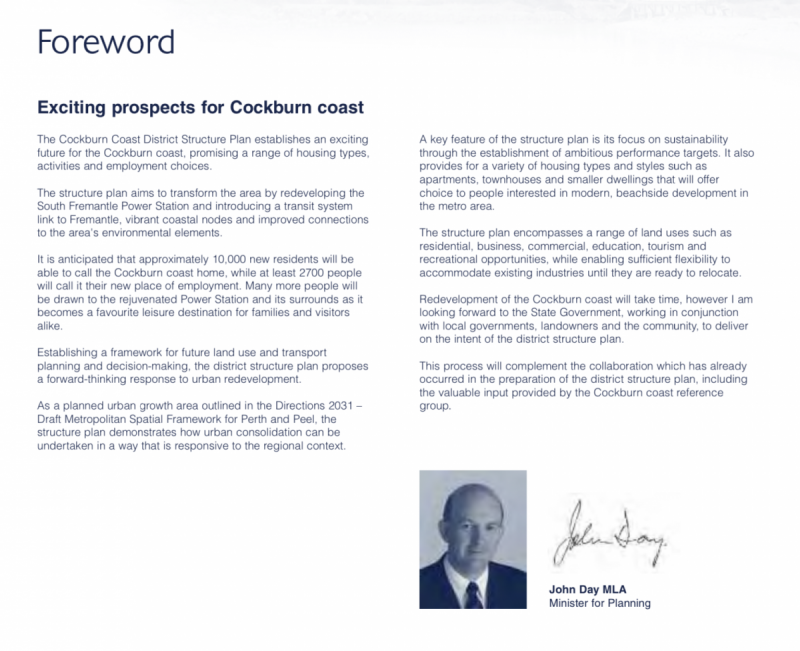
So, key features stated 12 years ago included –
* a mix of housing
* a range of activities
* a range of employment choices
* redevelopment of the Power Station
* a transit link – which we’ve taken to mean a rail link – to Fremantle
* improved connections to the area’s environmental elements
* 10,000 new residents in the Cockburn Coast strip
* 2,700 people employed in the area
* many more people – families and visitors – drawn to the rejuvenated Power Station for leisure.
Five years after Minister Day’s comments, the City of Cockburn adopted its 2014 Masterplan for the redevelopment of the South Fremantle Power Station. The Masterplan was endorsed by State Government.
Around this time ideas for the future for the Power Station seemed boundless. Beautiful imaginings poured forth. Like this one attached to a 2014 State Government media release about the Masterplan.

The media release in question, dated 16 December 2014, was issued by then Minister for Regional Development and Lands, and Minister assisting the Minister for State Development, Terry Redman. It was a good-news pre-Christmas story. The Minister remarked of the Masterplan that –
* it represented one of Perth’s biggest urban renewal projects
* the area could become home to up to 12,000 people in 6,000 homes over the next 15-20 years
* first development lots would be offered for sale in 2015 in the Robb Jetty precinct
* ‘In years to come’ the old Power Station would be used for ‘retail, commercial, and residential space, returning the iconic structure to a hub of activity’.
But there was no mention in all this master planning of the rail link to Freo previously touted by Minister Day.
Soon after the Masterplan was adopted, a proposal came forward for the development of a new container port incorporating the former South Fremantle Power Station ‘with the contiguous district structure plan’. The proposal included a floating dock in Cockburn Sound and land-backed facilities.
Here’s page 1 of the report supporting the ‘feasibility study’ from 2015.

That didn’t happen. Not surprisingly. It hardly reflected either Minister Day’s or Minister Redman’s statements about the rosy future for the Power Station. Or what was in the Masterplan.
THE FUTURE
More recently, DevelopmentWA has laid out a more detailed vision for the total Cockburn Coast and Power Station redevelopment area. You can read it in full here.
Key features of the vision depict a Power Station project that would include –
* a ‘tourist, community, commercial, retail and entertainment centre’
* comprise 5,500 sqm of retail and commercial floor space on the ground, first and second floors
* another 2,000 sqm of retail and commercial on the ‘Main Street’ area
* and restaurants and kiosk in the foreshore area
* up to 150 apartments above the Power Station building, with ocean views
* areas set aside for public purposes to enable community events and exhibitions ‘from time to time’
* green spaces in proximity to the residential areas
* a 54,000sqm managed foreshore reserve
* 2 rapid bus transit stations within easy walking distance – so no rail link to Freo
* total 840 homes in the Power Station precinct
* heritage a key consideration
* environmental approvals on clean up of the site having to be obtained
* a marina not being considered, but possibly considered in the future
* the public having the opportunity to comment during planning phases, including in relation to a local structure plan and design guidelines
* the existing freight rail line to Freo Port would be retained.
The big point to note here is that Mr Day’s attractive idea for a Freo rail link remains abandoned. Rapid buses are meant to do the trick in the place of a trains in getting people, especially visitors, to this landmark community and tourist hub. And, of course, cars!
One immediately wonders why trains or light rail options, as suggested by Freo Councillor Adin Lang, far more pleasant, enticing and efficient means of transport for locals and tourists, wouldn’t be preferred. Only cost can explain the preference. For surely rail or light rail is the answer.
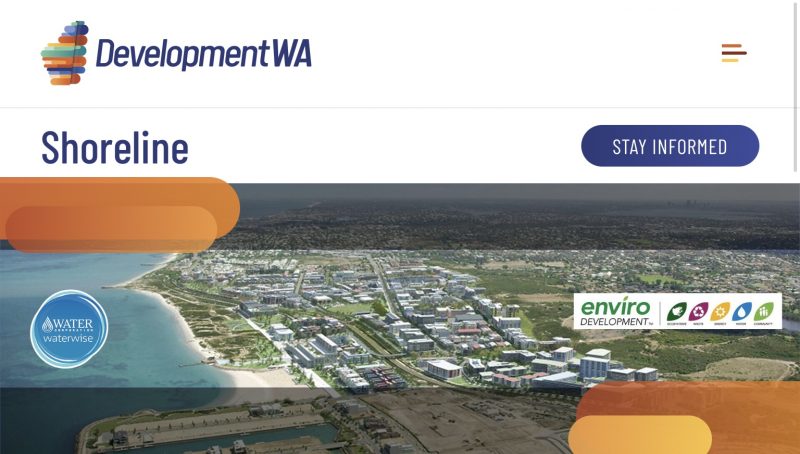
WHO OVERSIGHTS THE EOI PROCESS?
This raises an important question about just who will review the private sector EOIs when they come in. Will it actually be Synergy, or another State agency like DevelopmentWA, that over-sights the EOI process to check that the private sector pitches for the Power Station site conform with these key redevelopment guidelines?
It would seem odd that such a task should be left to Synergy, an agency with no responsibility for heritage and community interests, as emphasised by its own neglectful treatment of the Power Station over many decades.
PLEASE HELP US TO GROW FREMANTLE SHIPPING NEWS
FSN is a reader-supported, volunteer-assisted online magazine all about Fremantle. Thanks for helping to keep FSN keeping on!
At a broader regulatory level, we should mention that currently the Power Station site is affected by two planning schemes – the MRS or Metrpolitan Region Scheme under which it is zoned ‘Urban’; and the City of Cockburn scheme under which is is zoned ‘Development’.
An application to redevelop the site requires the approval of the WA Planning Commission under the MRS. The Planning Commission is also responsible for approving subdivision of the site.
Under the Cockburn scheme, the developer must obtain an endorsed local structure plan from the City, which gets passed on to the WA Planning Commission as part of the subdivision approval process over the site. The endorsement of the local structure plan will inevitably require the developer to pay financial contributions to the City on account of the provision of related community infrastructure.
It’d be interesting to know if would-be developers are planning on speaking with the Planning Commission and the City of Cockburn about their plans at the same time as they advance their EOIs through the sale process.
WHY THE APPARENT HASTE WITH THE SALE PROCESS?
At one level, it really should come as no surprise to anyone that the State Government should consider there is or may be land development industry interest in the acquisition of the Power Station site, nor that the Government would prefer to see redevelopment of the site by a private sector organisation with the requisite skills, rather than undertake the expensive site remediation, heritage restoration work, and subdivision itself. It has taken the same broad approach to the redevelopment of the old East Perth Power Station site.
If, however, the ideas pitched by the private sector don’t offer real solutions that serve the public heritage and community interests in the redevelopment of the South Fremantle Power Station site as outlined above, then the State Government will be obliged to rethink its strategy and become the developer itself, probably through DevelopmentWA.
There’s been a lot of Freo-wide chatter about the speed of the EOI process that Synergy, the nominal owner of the South Fremantle Power Station site, has advertised. As we recently explained in our story on the sale move your EOI needs to be in by this Friday, 3 July. The outcome will be notified by Synergy, or its Minister Bill Johnston in September.
This rather tells you, as the Minister has recently confirmed, that, behind the scenes, a prospective land developer has been knocking on Synergy’s, the Minister’s and/or The Government’s doors for a little while asking about the prospect of a sale and purchase of the old Power Station so they can get on with its redevelopment and complete the Cockburn Coast puzzle. Rather than effect a private sale, an EOI process is designed to level the playing field. But why the haste?
Social media has been alight with suggestions there is some secret deal afoot between some preferred buyer and the State Government, a WA Inc Mark 2 sort of behind-closed-door, Mate’s Rates deal. We are inclined to think there is a more compelling explanation for this tight EOI timeframe than just a persistent door knocker. And it is this.
It is clear, as confirmed by a Department of Planning, Lands and Heritage spokesperson, that the successful developer-purchaser of the Power Station site, would be able to apply for its development application to be dealt with under the flexible Covid planning system passed by the State Parliament 12 months ago, provided it gets its application in by 6 January next – just over 6 months from now.
Under the Covid planning system an applicant is effectively able to invite a reconsideration of ‘legal instruments’ that would ordinarily apply to the proposal and constrain the discretion of a decision-maker to approve the application.
In this case reconsideration of the key heritage and contamination laws, as well as the need to have the City of Cockburn endorse a local structure plan, would all in theory be open for reconsideration. As would the content of the 2014 Masterplan.
We discussed the temporary Covid planning system not long ago in our story on the Fremantle’Suffolk’ Hotel development application. It was brought in as a temporary exception to the usual planning approval system. It has a limited life of 18 months and as noted, expires as of 6 January 2022. It was and is intended as a tool to kick-start major development proposals during a period when the State Government feared Covid might cause a significant decline in the State’s economy – a decline that doesn’t seem to have eventuated.
Development applications fit under the temporary Covid planning system if assessed to have State significance and a value of $20 million or more. An application pertaining to the Power Station’s redevelopment would seem to satisfy both of these tests. Where there is a fit the WA Planning Commission becomes the sole decision maker and the role of a local government is merely advisory.
But more than that, if a development application fits under the Covid planning system, then existing ‘legal instruments’ that would otherwise apply to the development proposal and constrain the ability of the WA Planning Commission to approve the proposal, are not binding, although ‘due regard’ must be had to them. It’s a very flexible system, one designed to facilitate the removal of perceived ‘red’ and ‘green’ tape from a proposal.
Therein lies the worry. A ‘legal instrument’ is defined in the 2020 amendments to the Planning and Development Act 2005 that introduced the Covid planning system, to include both the WA Contaminated Sites Act 2003 and the WA Heritage Act 2018, and would pick up the requirement for the City of Cockburn to endorse a local structure and the 2014 Masterplan, each of which would otherwise plainly be relevant to any development application concerning the Power Station redevelopment.
On the face of it, there is a concern that a development application by a private sector developer to redevelop the South Fremantle Power Station site very likely would fit under the Covid planning system and potentially enable an application for development approval either to sidestep completely or at least dilute the force of the legislation and planning requirements and rules applying to the site.
As a result, one may reasonably wonder whether the short EOI process designed to facilitate the sale of the Power Station is mostly to be explained by reference to the advantages the flexible Covid planning system bestows on an applicant whose development application fits under it.
In short, if a development application in respect of the Power Station site is lodged by the successful purchaser before the expiration of the Covid planning system on 6 January 2022, the potential advantages and flexibility offered to an applicant by the Covid planning system remain open to them. If an application is lodged after 6 January, that opportunity will no longer exist.
It’s a pretty powerful incentive to get a development application over the Power Station in as quickly as possible!
Editor’s note : Before posting this story, we wrote to the office of the Minister for Energy seeking clarification on whether the Covid planning system could potentially apply to a redevelopment application over the South Fremantle Power Station site. We kindly received this response from a Department of Planning, Lands and Heritage spokesperson:
‘Under the new Planning and Development Amendment Act 2020, the WAPC can accept applications for significant development proposals for a period of 18 months, until 6 January 2022.
‘Any successful purchaser of the South Fremantle Power Station site would need to lodge a valid development application with the State Development Assessment Unit (SDAU) prior to that date for it to be considered.
‘In addition, to be considered as a significant development under the new legislation, proposals in the Perth metropolitan area must have an estimated value of $20 million or more.’
UPDATE: since this story was first posted, we have been advised by the Office of Mr Johnston, the Minister for Energy, that ‘the day after the EOI process began, on 24 June, Synergy had received 12 EOIs from sophisticated bidders’.
* This article was written by Michael Barker, Editor, Fremantle Shipping News.
PLEASE HELP US TO GROW FREMANTLE SHIPPING NEWS
FSN is a reader-supported, volunteer-assisted online magazine all about Fremantle. Thanks for helping to keep FSN keeping on!
